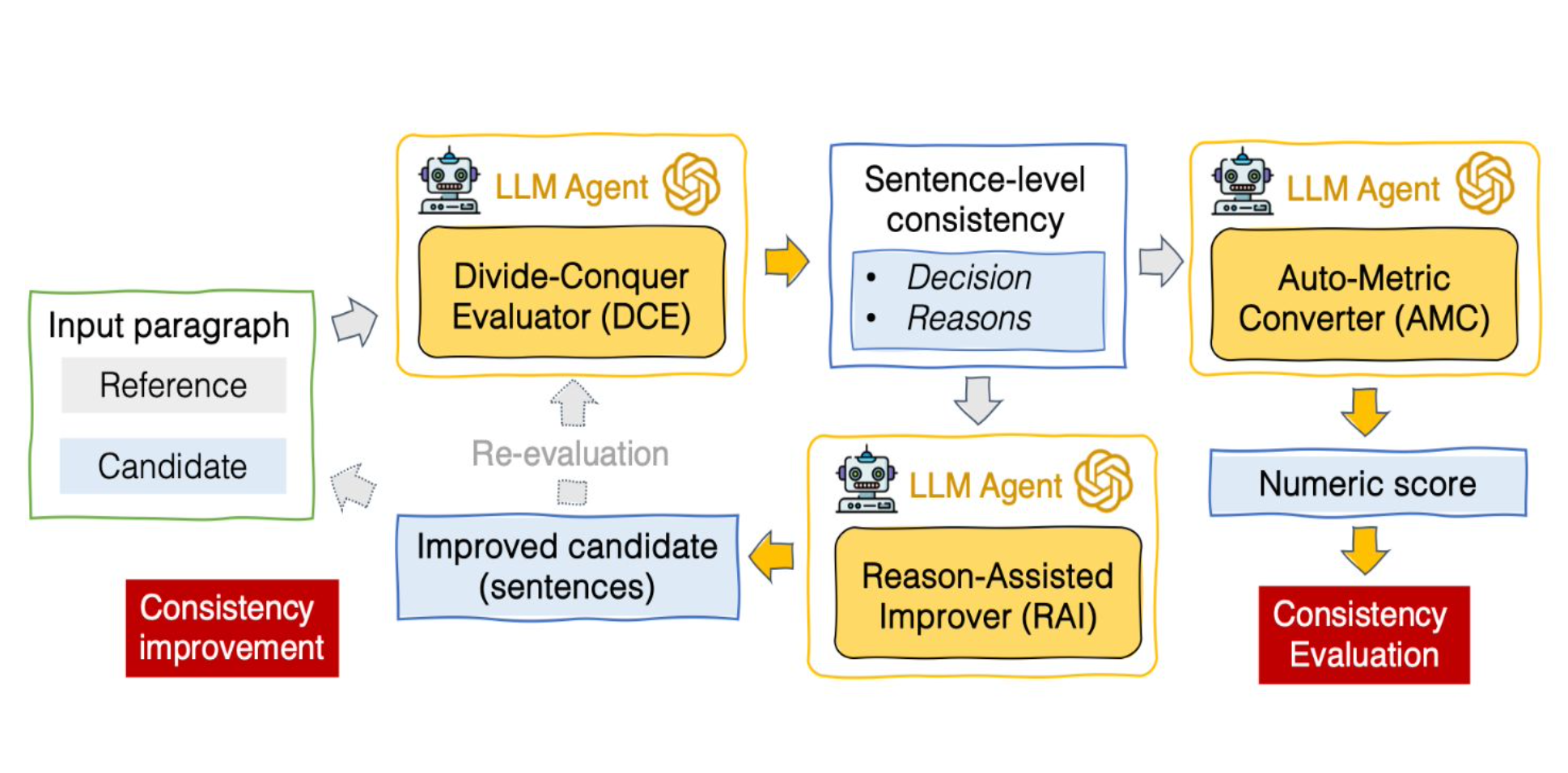DCR-Consistency: Divide-Conquer-Reasoning for Consistency Evaluation and Improvement of Large Language Models
Evaluating the quality and variability of text generated by Large Language Models (LLMs) poses a significant, yet unresolved research challenge. Traditional evaluation methods, such as ROUGE and BERTScore, which measure token similarity, often fail to capture the holistic semantic equivalence. This results in a low correlation with human judgments and intuition, which is especially problematic in high-stakes applications like healthcare and finance where reliability, safety, and robust decision-making are highly critical. This work proposes DCR, an automated framework for evaluating and improving the consistency of LLM-generated texts using a divide-conquer-reasoning approach. Unlike existing LLM-based evaluators that operate at the paragraph level, our method employs a divide-and-conquer evaluator (DCE) that breaks down the paragraph-to-paragraph comparison between two generated responses into individual sentence-to-paragraph comparisons, each evaluated based on predefined criteria. To facilitate this approach, we introduce an automatic metric converter (AMC) that translates the output from DCE into an interpretable numeric score. Beyond the consistency evaluation, we further present a reason-assisted improver (RAI) that leverages the analytical reasons with explanations identified by DCE to generate new responses aimed at reducing these inconsistencies. Through comprehensive and systematic empirical analysis, we show that our approach outperforms state-of-the-art methods by a large margin (e.g., +19.3% and +24.3% on the SummEval dataset) in evaluating the consistency of LLM generation across multiple benchmarks in semantic, factual, and summarization consistency tasks. Our approach also substantially reduces nearly 90% of output inconsistencies, showing promise for effective hallucination mitigation.
PDF Abstract

 PAWS
PAWS